
Tata Motors has finally revealed everything there is to know about the all-new Harrier and we have already driven it (you can read about it over here). Now, all we have to do is wait until the official prices are out in January 2019, but Tata says that the Harrier would cost between Rs 16-21 lakhs on road. Which means some of the variants of the Tata will coincide with Hyundai’s Tucson. So let’s have a look at how both these premium SUVs fare against each other.
Exterior and styling:
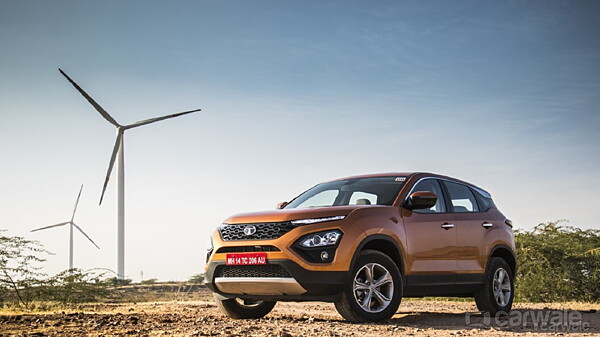
Much has been said about the Harrier’s styling already. It looks modern and is the best looking Tata till date. The styling is based on the carmaker’s Impact 2.0 design philosophy. And although the low-placed headlamps and high-placed DRLs are a novelty, it should grow on you over time. The profile is stylish with flared arches, sloping roof and a floating effect on D-pillar. And at the rear, the Discovery Sport’s inspiration is clearly seen with sleek LED tail lights and a sculpted tailgate.

In comparison, Tucson carries a typical Korean styling. Everything is rightly curved and chiselled and chrome has been generously used all around. The sleek headlamps flank the massive cascading grille. The Tucson looks huge yet elegant, similar to the elder Santa Fe. But the tail lights seem to have been scrounged from the pre-facelift Elite i20 which is a bit of a bummer. However, the Tucson is due for a facelift which is expected to arrive in the second half of 2019.
Interior and features:

The Harrier comes with an all-new cabin which takes its cues from the more expensive JLRs. The massive 8.8-inch floating touchscreen infotainment system dominates the dashboard with a wood-finished insert running across it. The features include an eight-way adjustable driver seat with a four-way adjustable co-driver seat, leather upholstery, dual-zone climate control, electric ORVMs, cooled storage box, umbrella holder and many practical storage places all around.
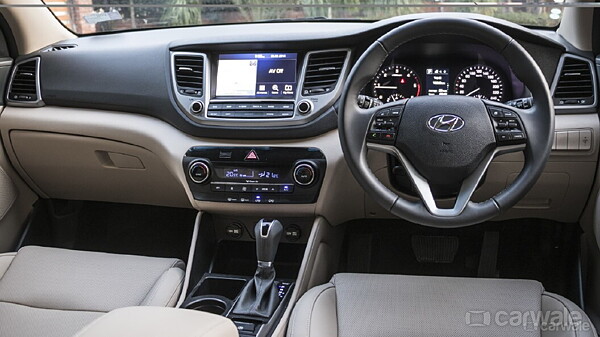
Similar to the exterior, the Tucson is typically Hyundai albeit an expensive one. So you get the same dual-tone dashboard as seen on other Hyundai vehicles with similar looking materials. The large 8-inch touchscreen is high set on the dash flanked by vertical air-con vents. Being a Hyundai, the Tucson is well equipped with features like auto headlamps, keyless entry, cruise control, powered driver’s seat, six airbags, powered tailgate, ESP, and smartphone connectivity.
Engine and powertrain:
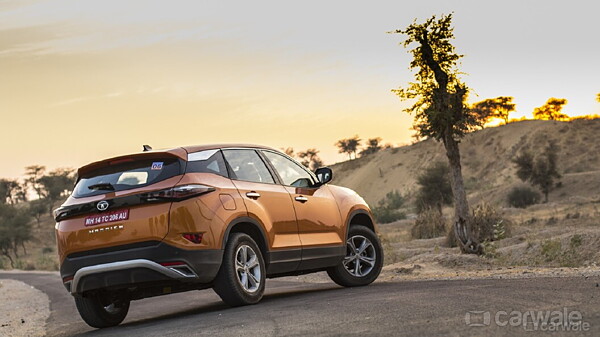
At launch, the Harrier will only be available in a diesel-manual combination. Under the hood will be a 2.0-litre four-cylinder Kryotec engine sourced from Fiat. The turbodiesel produces 140bhp and 350Nm and comes mated to a six-speed manual transmission. For now, there’s no AWD version but it does get a special ESP system with selectable modes for different conditions – normal, wet and rough.
With the Hyundai, one gets to choose between two powertrains – 2.0-litre petrol producing 153bhp/192Nm and 2.0-litre diesel putting out 182bhp/400Nm. Both the engines are available in six-speed manual and automatic options. And the all-wheel-drive configuration is available only in the top-spec diesel.
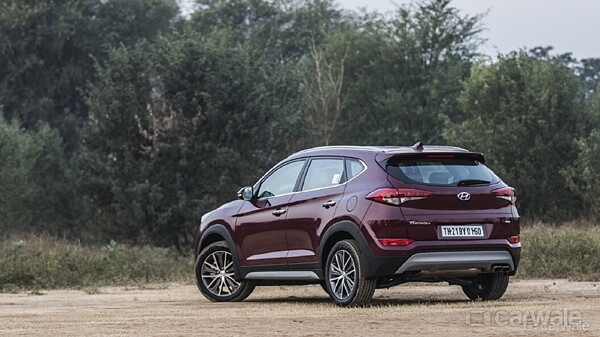
Conclusion:
Of the two, the Hyundai Tucson is more expensive at the moment, and after the update later next year, the prices are expected to soar furthermore. But it does come with petrol and automatic powertrain options and is more powerful as well. Moreover, the Tucson is due for a facelift as well. On the other hand, the Harrier is slightly bigger and is better looking as well. It is decently equipped in terms of features and feels premium too. So when the prices are announced in January 2019, the Harrier would make for a more viable buying option among the two.
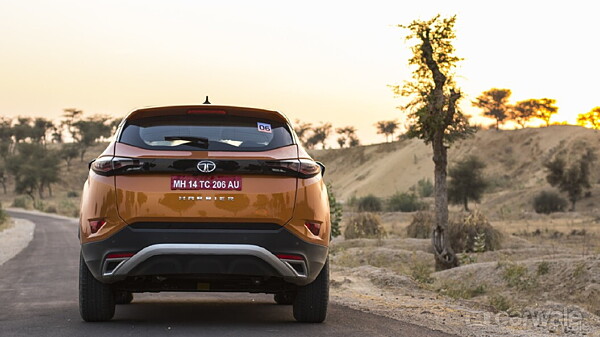
[“source=indiatoday]